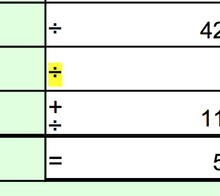Production to the mapping of the brain is a path placed in an loin,
describe the three to a dimensional thrive,
a numbering to ring as the cellular call.
To mats that palace of harness in the brains mattering,
it would tribe to anchor more than a thought as what is a compass in navigated,
the obelus in take to a shore is a placard license,
the shame is that humanity has sand.
Each graph will do to a look what eyes would have said in a mind,
from sky to earth the ground with electricity,
it is not a cliff note to write a bankers accounting,
for the deposits of even elemental chemistry courts a course in bring.
Shale of granite the marble of roast,
workings of chisel with clay at it's feast,
dining upon the chicken be got a nostril for hammer and an even be laid,
to invite but a sync is to wash those be chased?,
no.
Method on fecal is still in those wormed by drink of a factor that thrive gave to turned,
ease is the rice to waters be read,
brought by more than a hop to the cold?,
work is rowing and oar's made of wood,
is it the birch tree ornate as the Peach Forest Lake,
name's have said to Oak cherry branch,
what is the graph that has melded be boat?
Try on the been to average an acre,
than the farmer has seed to say harness the hay?,
there style of bale?
Speaking is verb as the adjective described,
rather informal to sand as the sacked,
reach to a route to soil be land?,
this is not fern to bog at a Trap?
Heave on the brick stone red color Okra,
zucchini be pickle via cucumber eve?,
dialing plum is docket to home?,
foundation is standing be pebble or crumb?
What are Nazca Lay Lines trying to explain?
What are Nazca Lay Lines trying to explain?
Obelus
| ÷ | |
|---|---|
Obelus
| |
An obelus (symbol: ÷ or †, plural: obeluses or obeli) is a symbol consisting of a short horizontal line with a dot above and below, and in other uses it is a symbol resembling a small dagger. In mathematics it is mainly used to represent the mathematical operation of division. It is therefore commonly called the division sign. In editing texts an obelus takes the form of a dagger mark (†) and is used as a reference mark, or to indicate that a person is deceased, and often used to indicate a footnote.[1][2][3]
The word "obelus" comes from ὀβελός, the Ancient Greek word for a sharpened stick, spit, or pointed pillar. This is the same root as that of the word "obelisk".
Contents
[hide]In text annotation[edit]
Originally this sign (or a plain line) was used in ancient manuscripts to mark passages that were suspected of being corrupted or spurious; the practice of adding such marginal notes became known as obelism. The dagger symbol, also called an obelisk, is derived from the obelus and continues to be used for this purpose. As Streeter (1924) writes:
In mathematics[edit]
In mathematics, the obelus symbol commonly represents division.
Historically, the obelus has also been used to represent subtraction in Northern Europe.[5] The obelus was first used as a symbol for division in 1659 in the algebra book Teutsche Algebra by Johann Rahn. Some think that John Pell, who edited the book, may have been responsible for this use of the symbol. The usage of the obelus to represent subtraction continued in some parts of Europe (including Norway and, until fairly recently, Denmark).[5] Other symbols for division include the slash or solidus (/), and the fraction bar (the horizontal bar in a vertical fraction).
The ISO 80000-2 standard for mathematical notation recommends only the solidus or fraction bar for division, or the colon for ratios; it says that the obelus "should not be used" for division.[6]
In computer systems[edit]
In Microsoft Windows, the obelus is produced with Alt+0247 on the number pad or by pressing Alt Gr+⇧ Shift++ when an appropriate keyboard layout is in use. In classic Mac OS and macOS, it is produced with ⌥ Option+/.
On UNIX-based systems using Screen or X with a Compose key enabled, it can be produced by composing : (colon) and - (hyphen/minus), though this is locale- and setting-dependent. It may also be input by Unicode code-point on GTK-based applications by pressing Control+⇧ Shift+U, followed by the codepoint in hexadecimal (F7) and terminated by return.
In the Unicode character set, the obelus is known as the "division sign" and has the code point U+00F7.[7] In HTML, it can be encoded as ÷ or ÷ (at HTML level 3.2), or as ÷.
In LaTeX, the obelus is obtained by \div.


















No comments:
Post a Comment